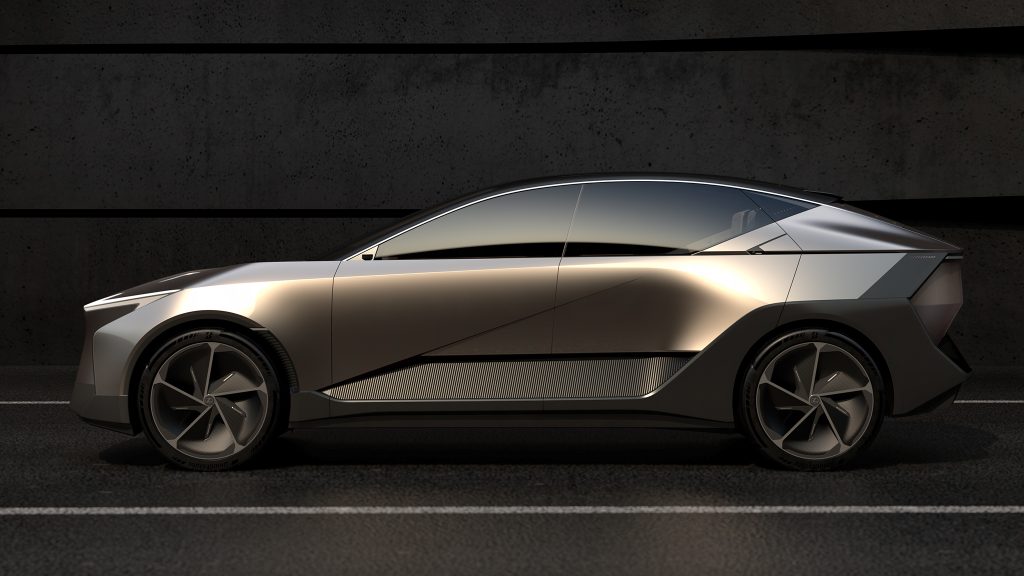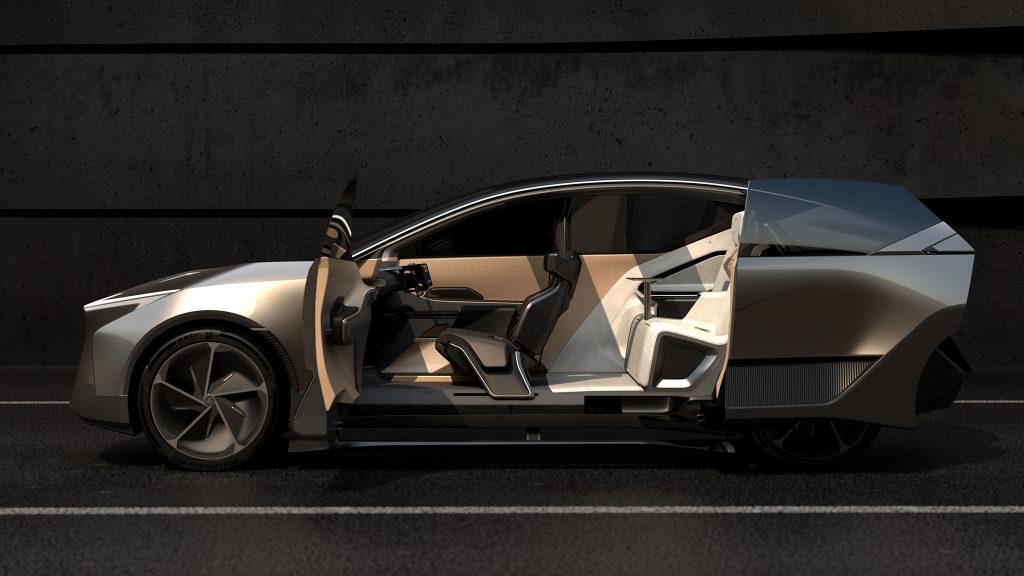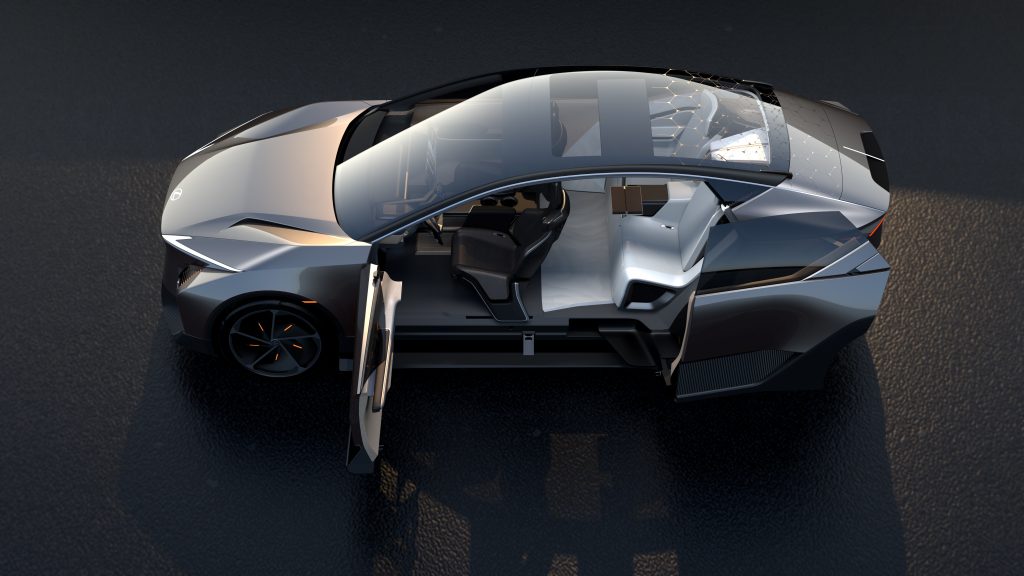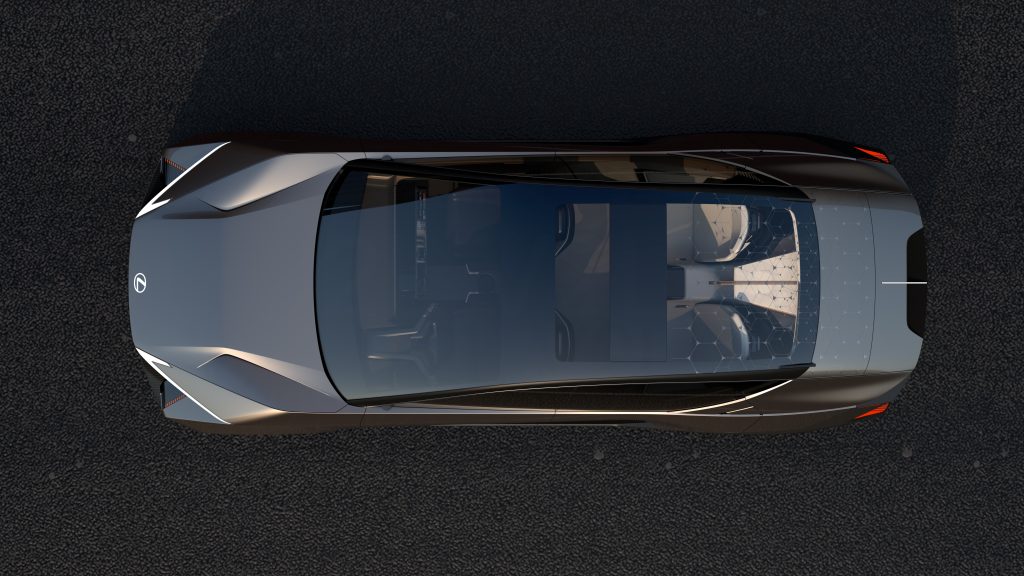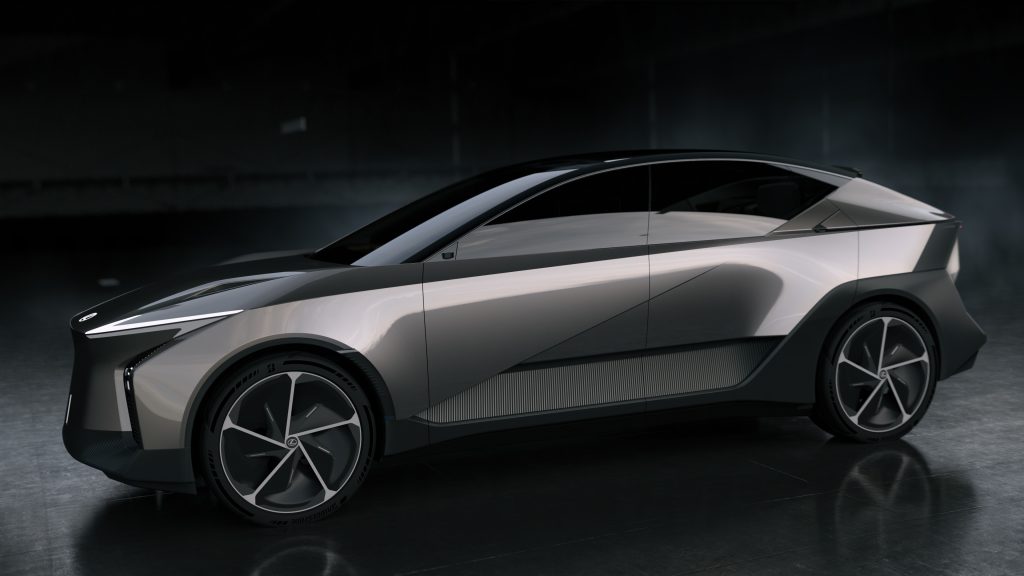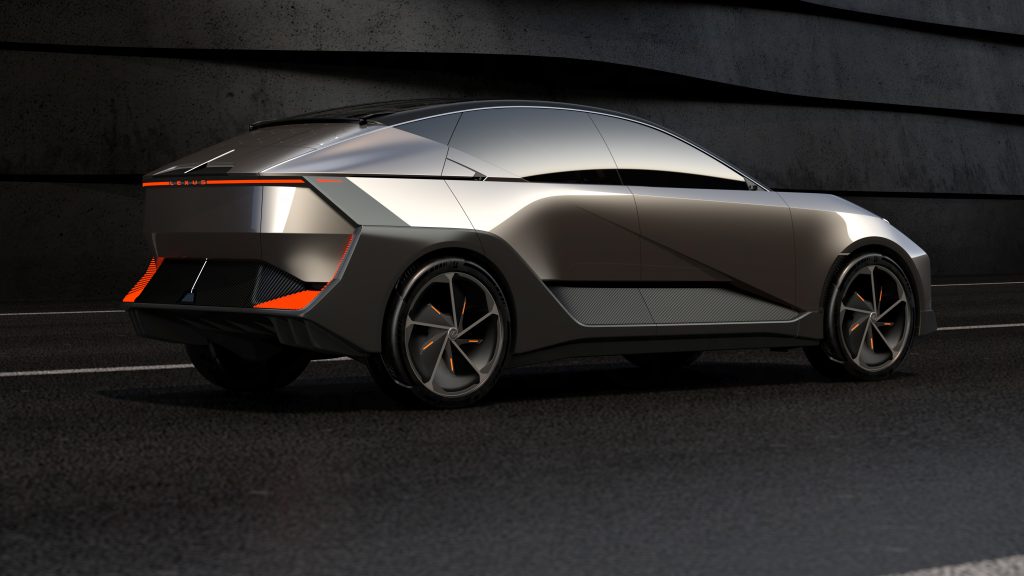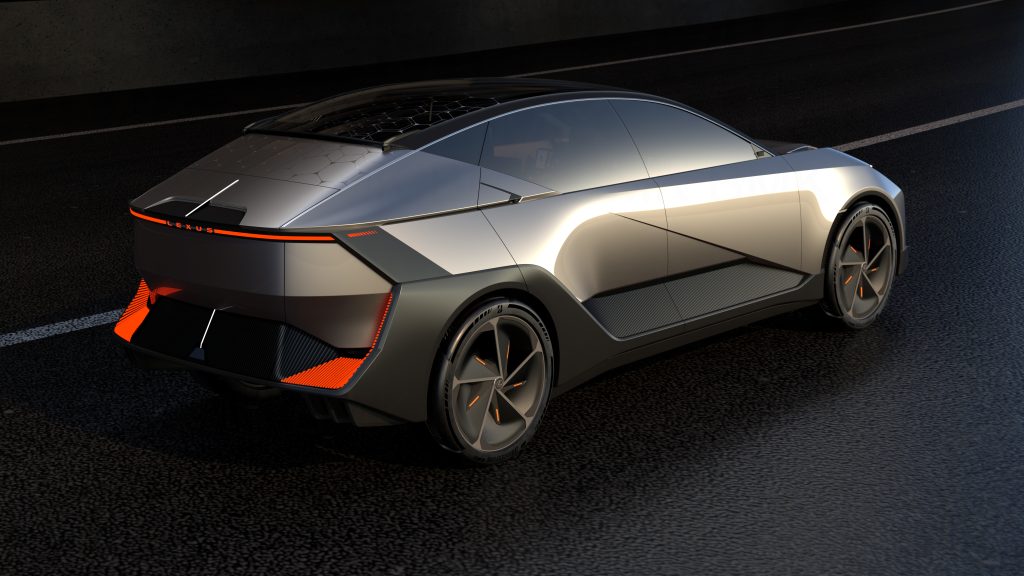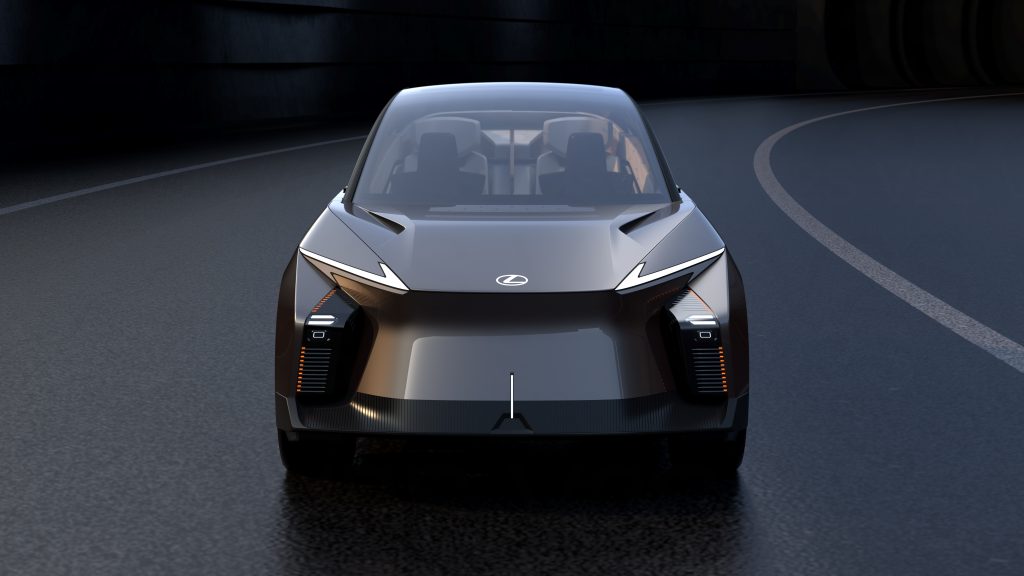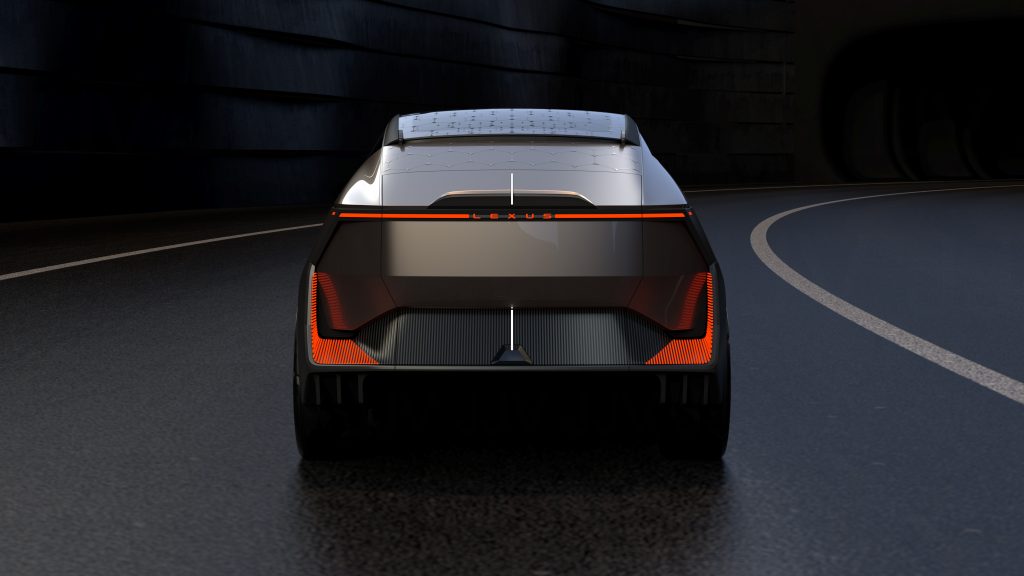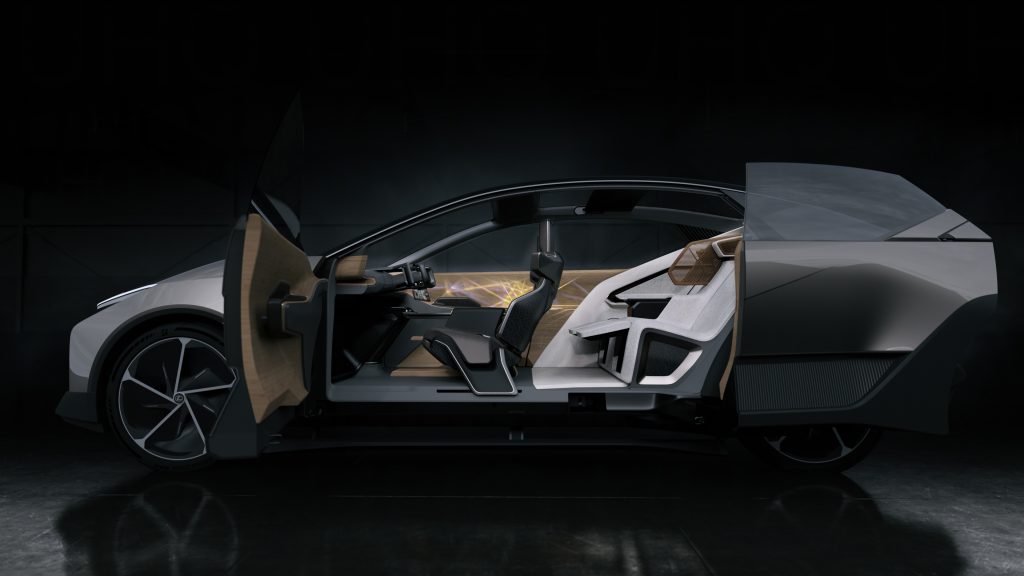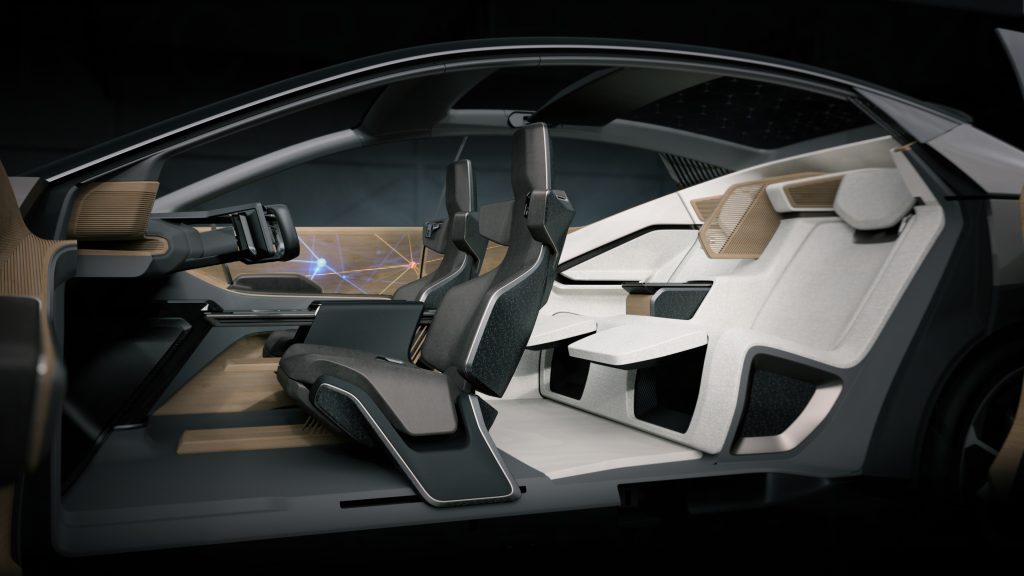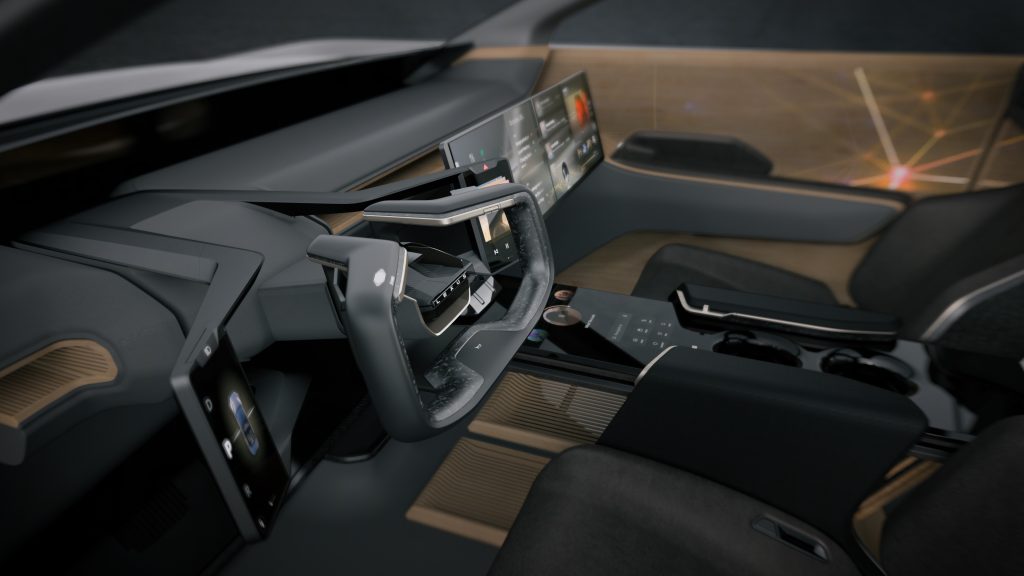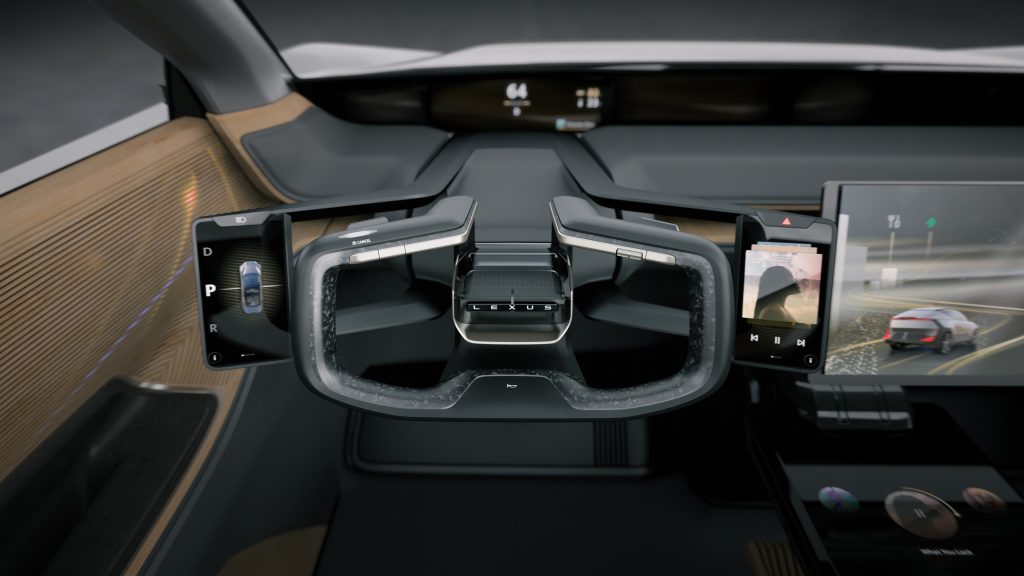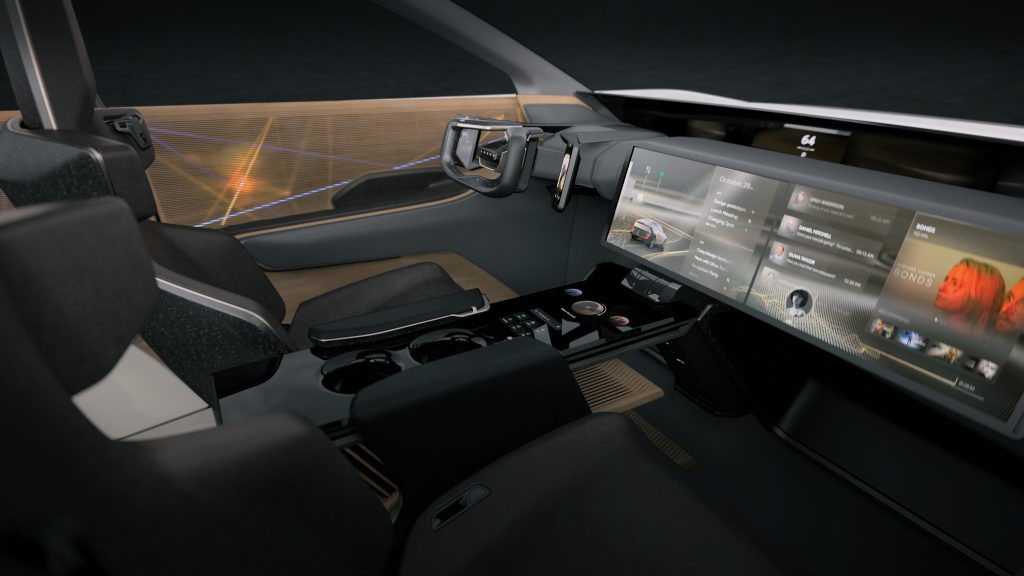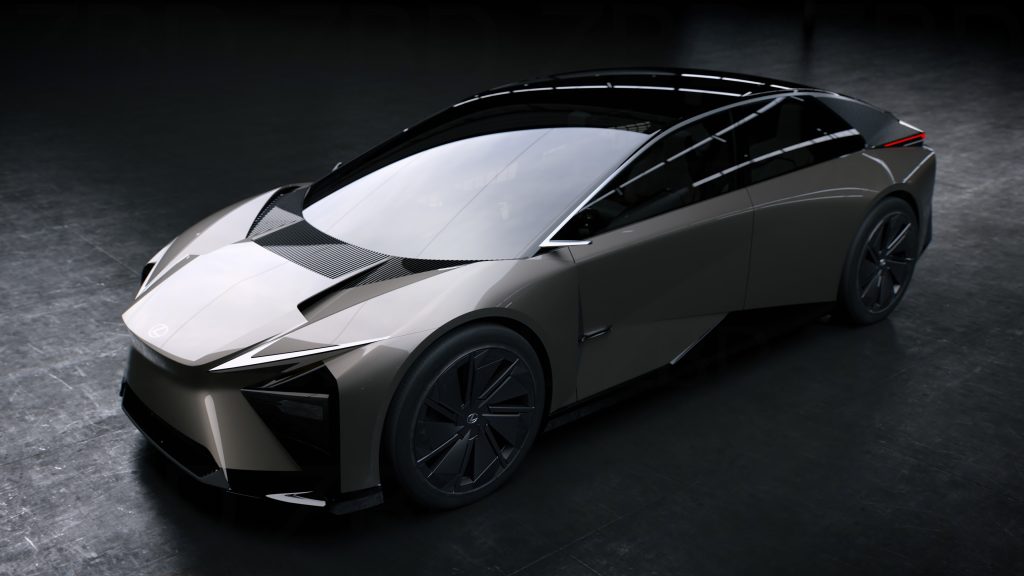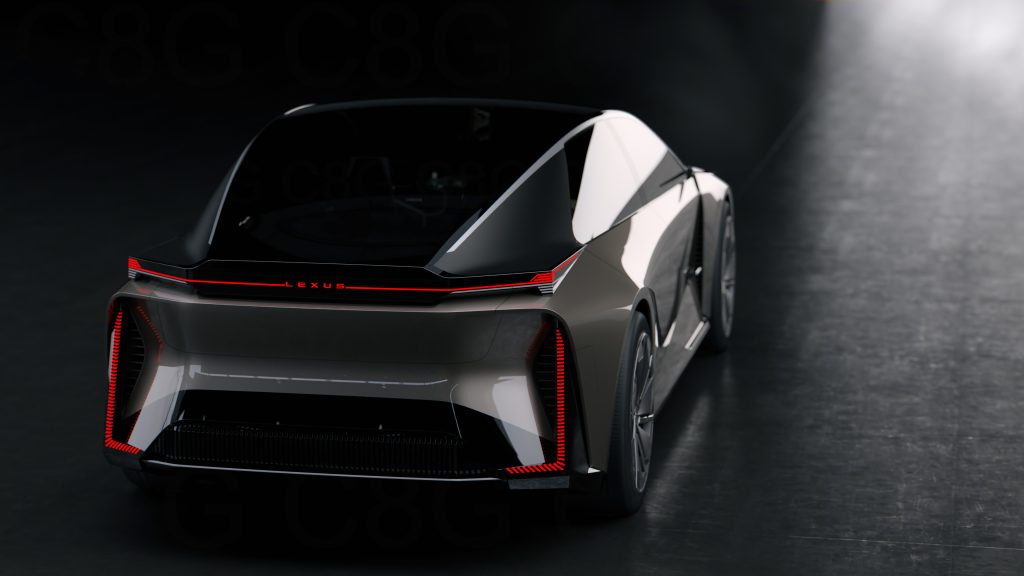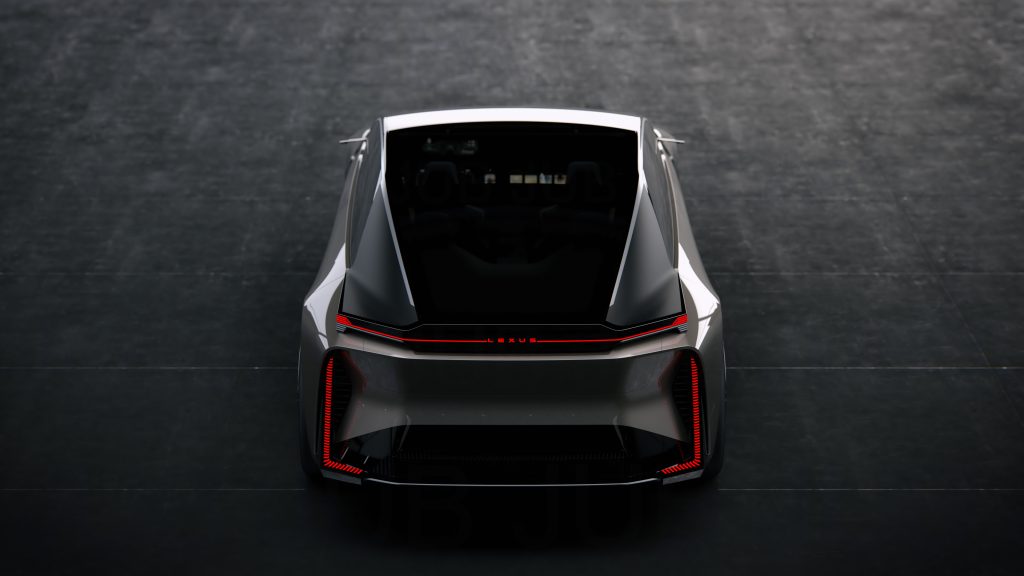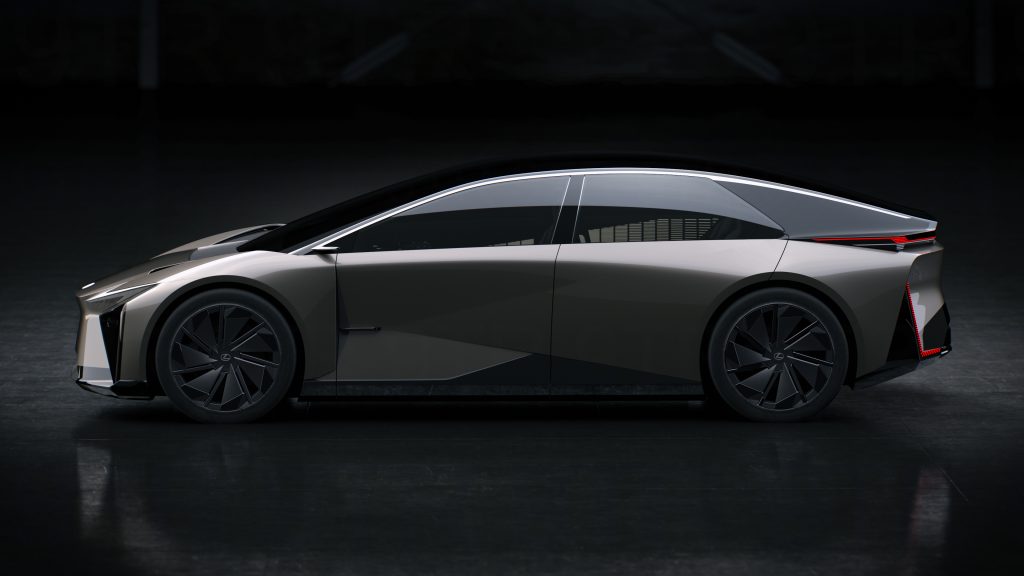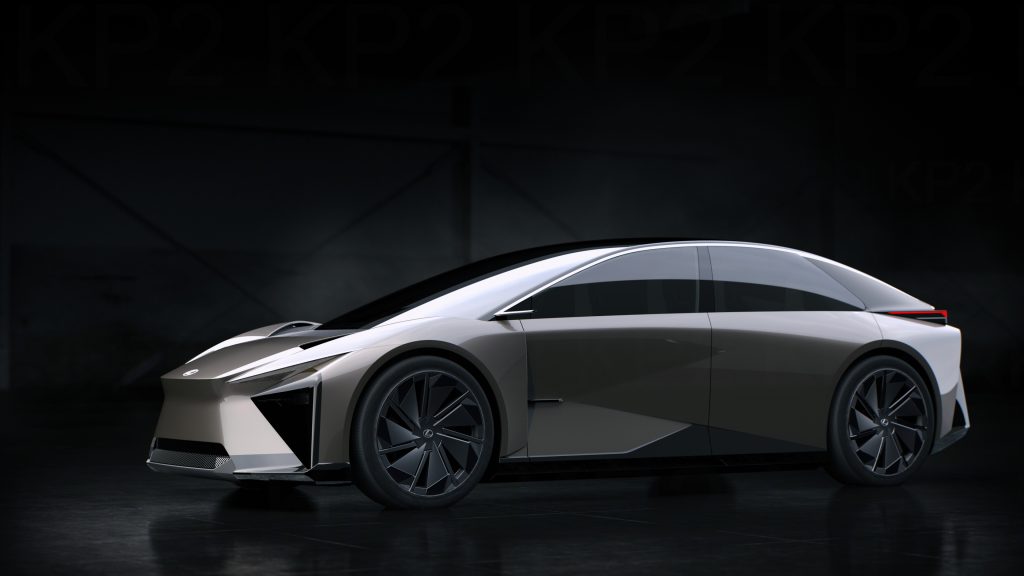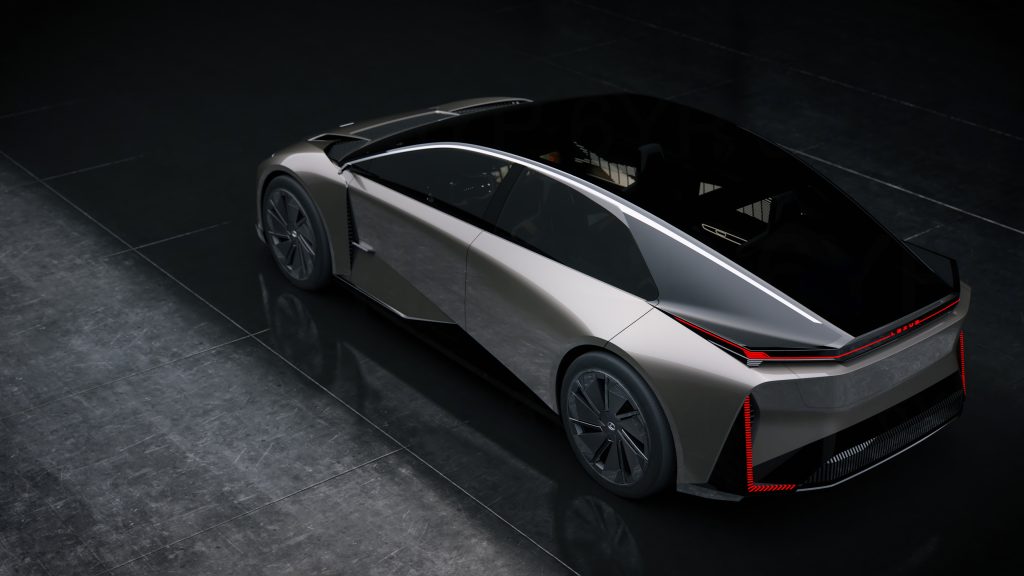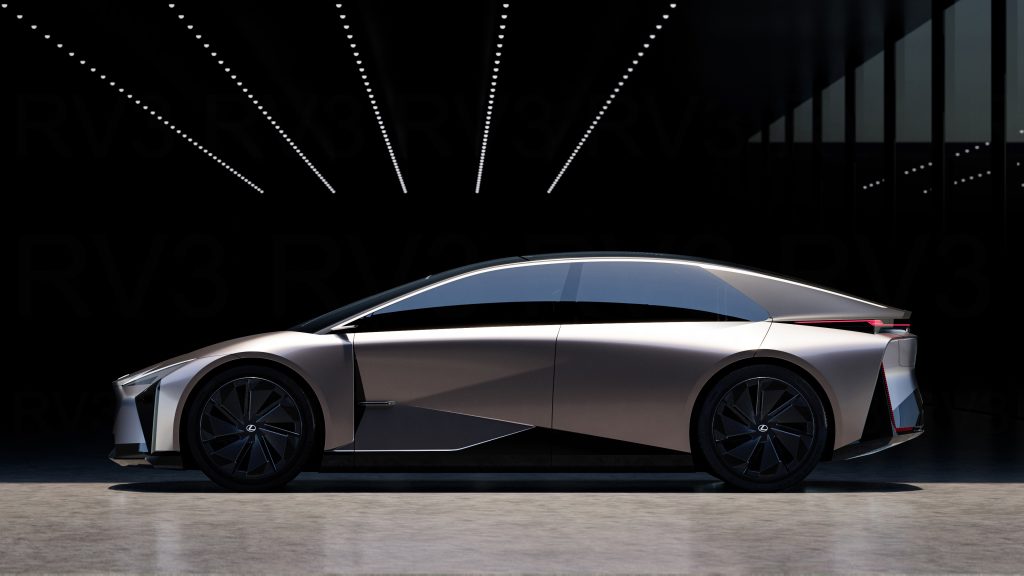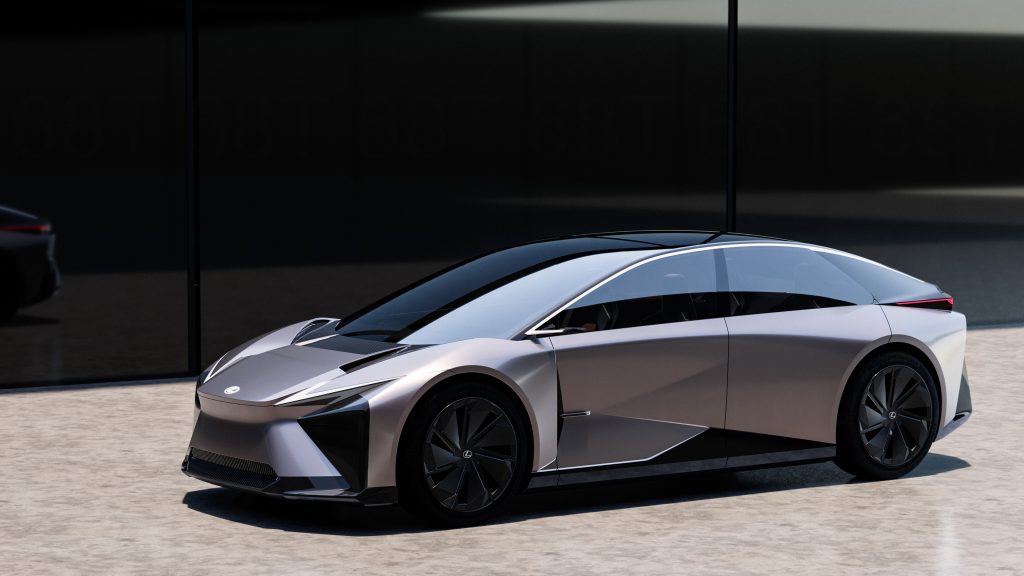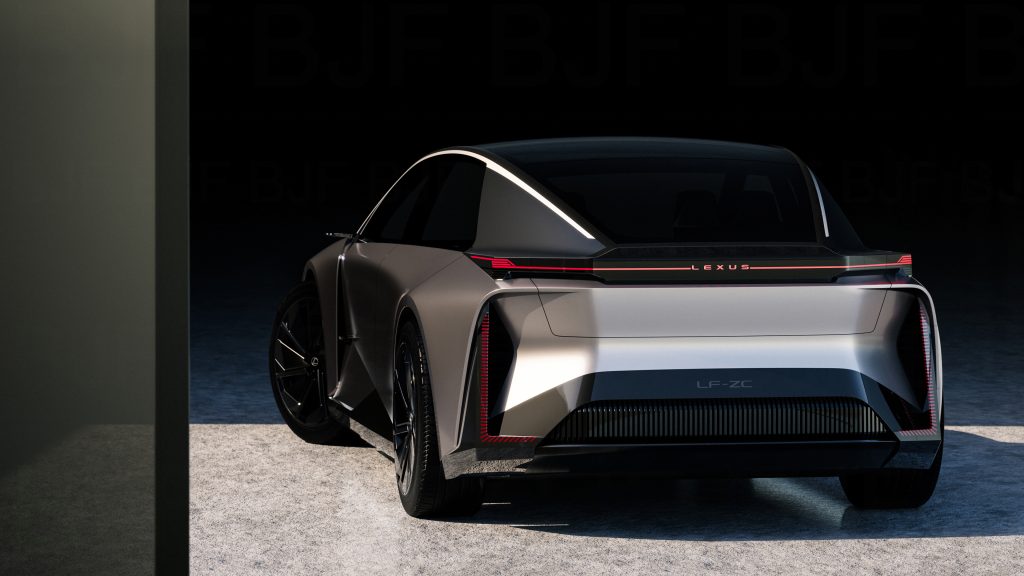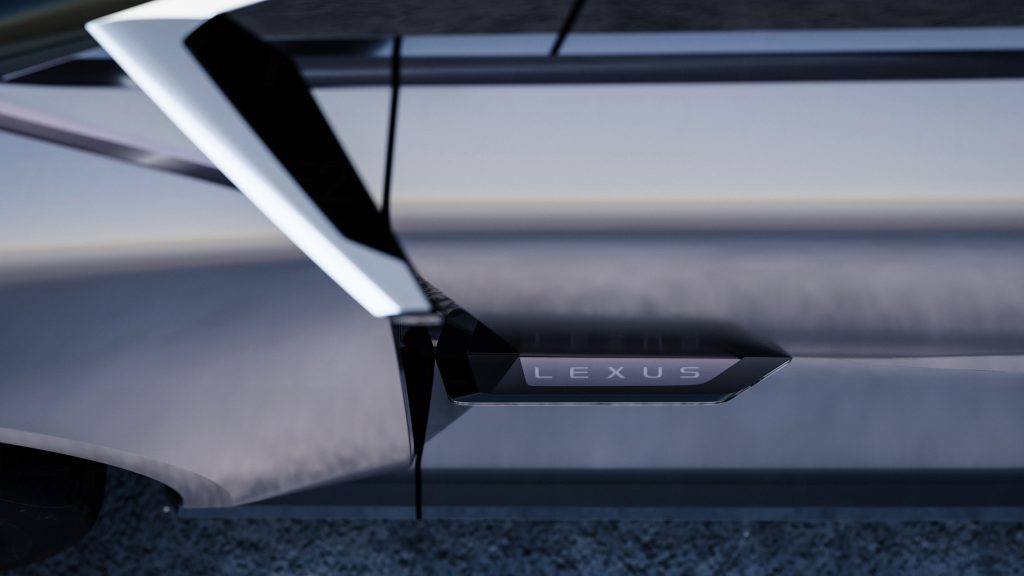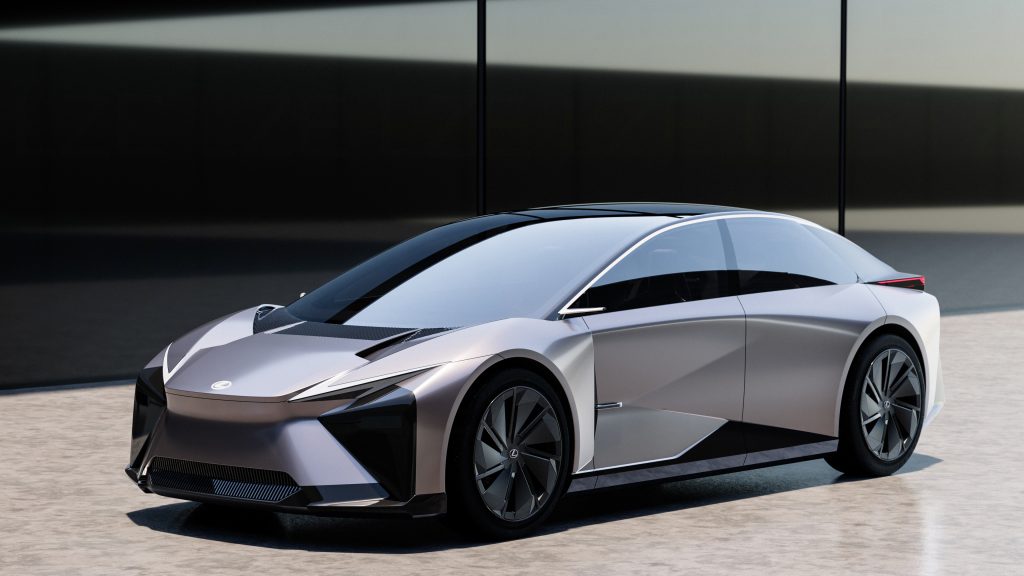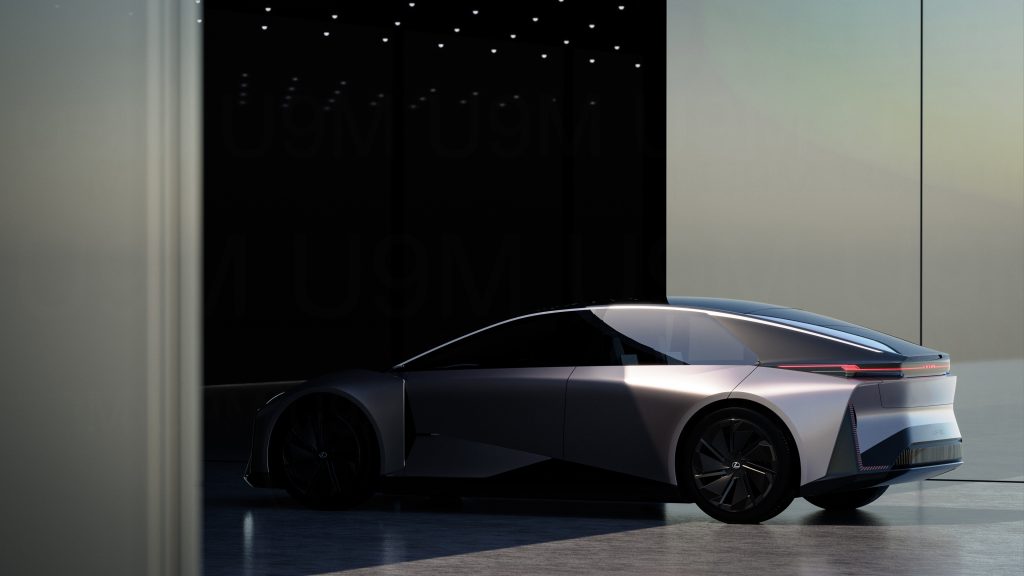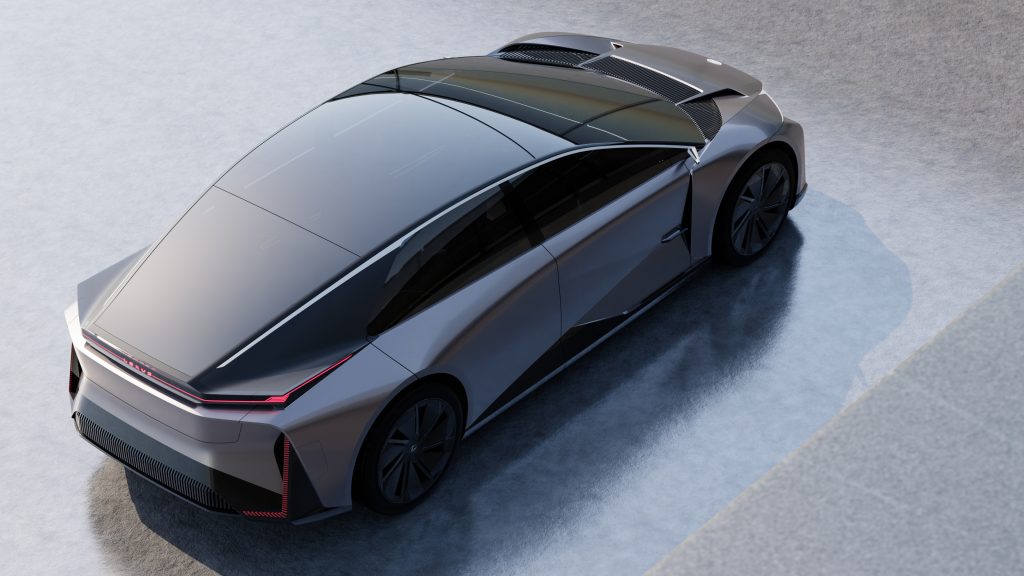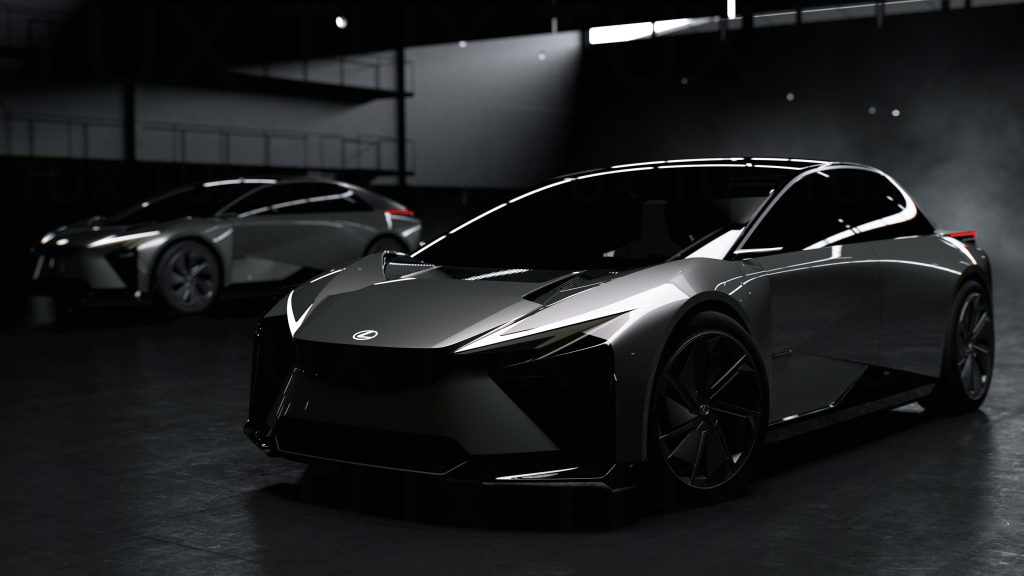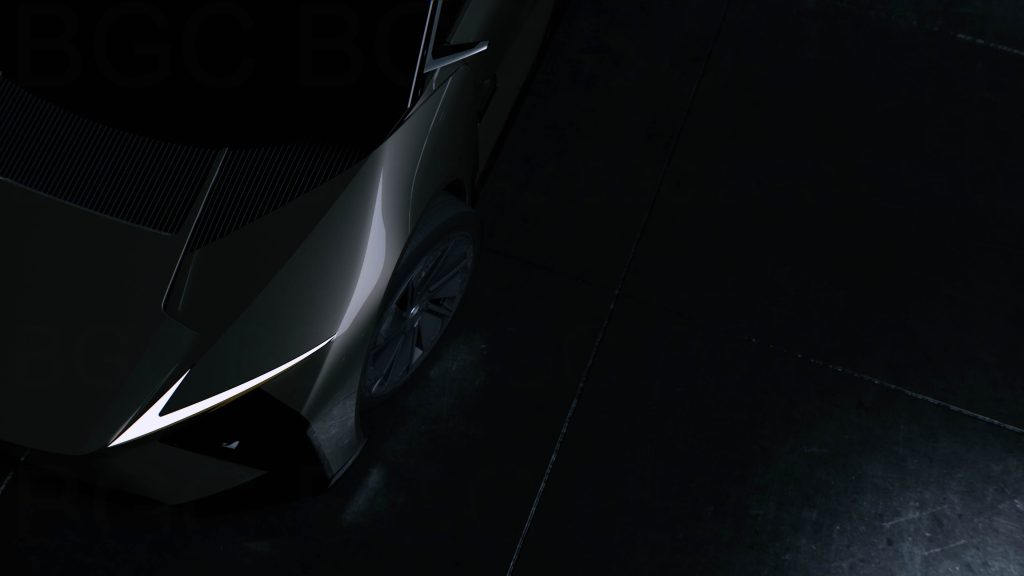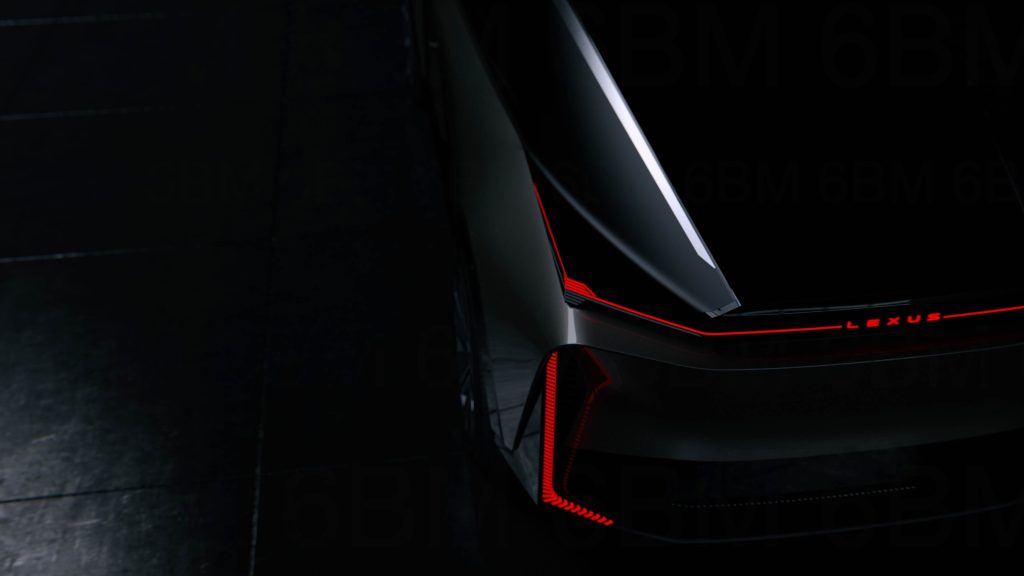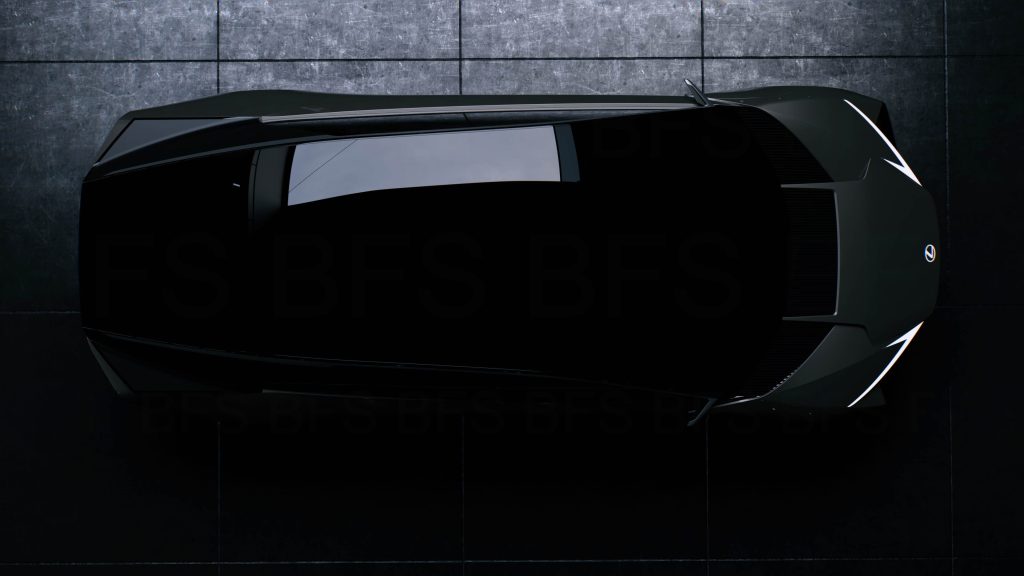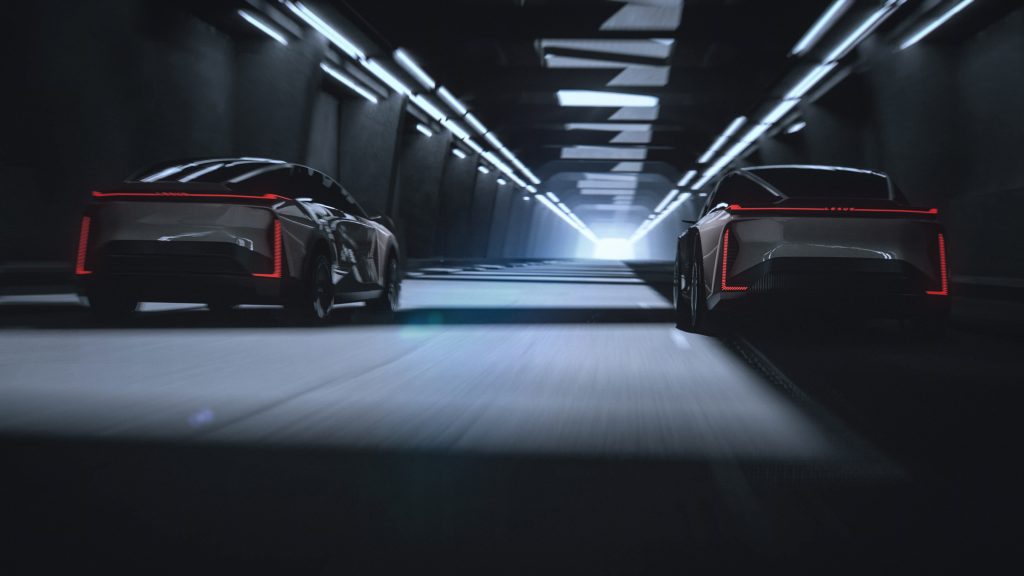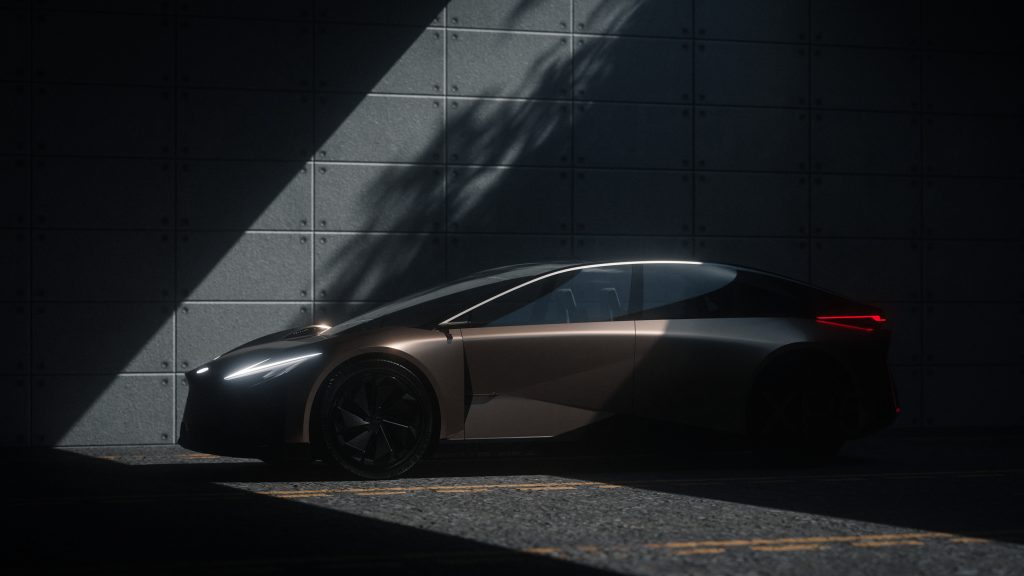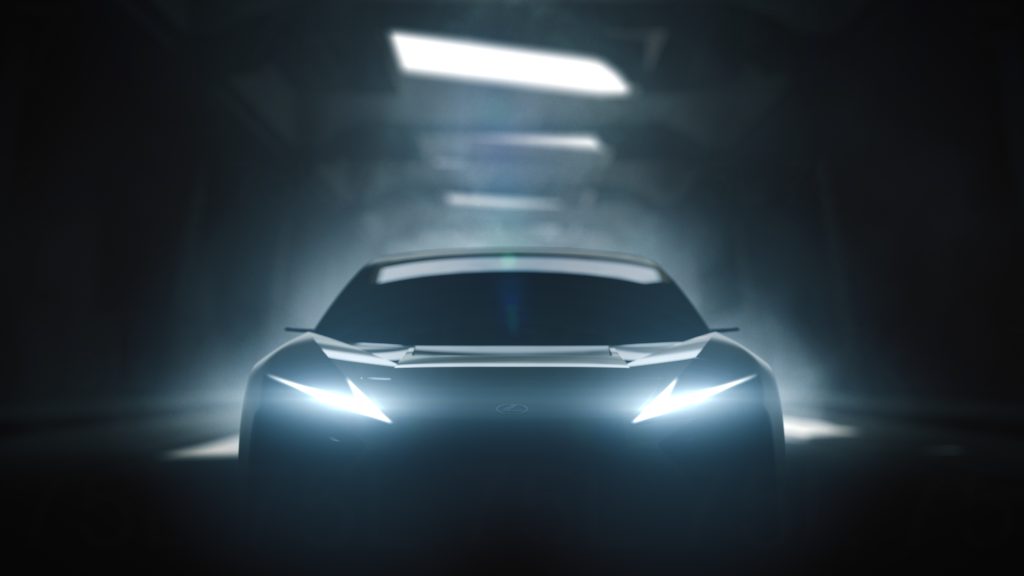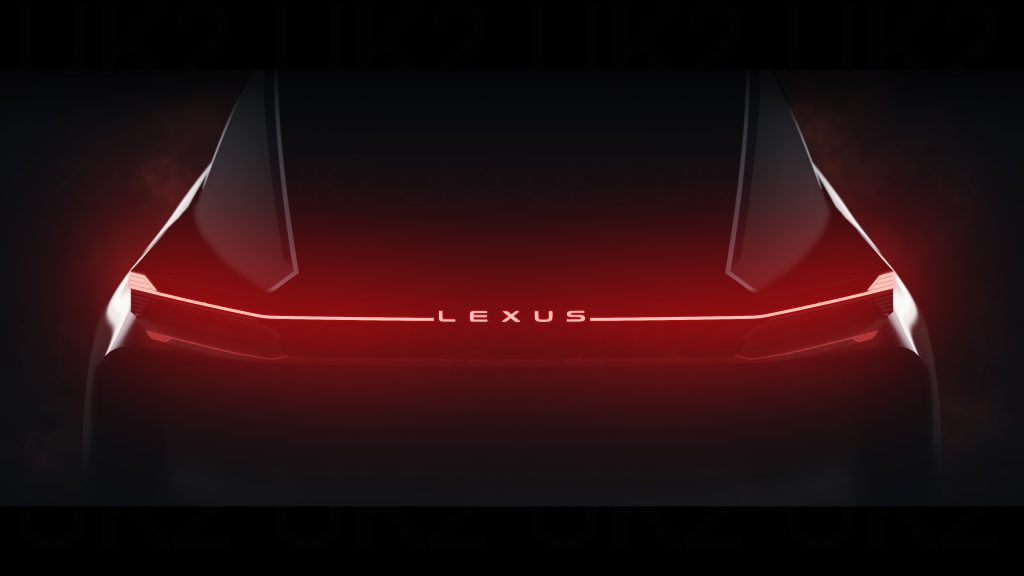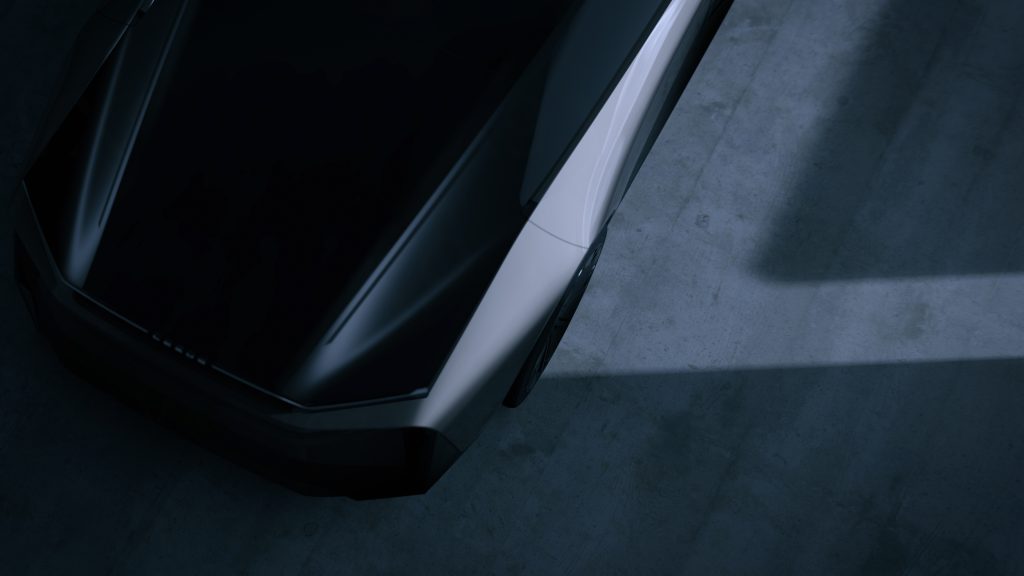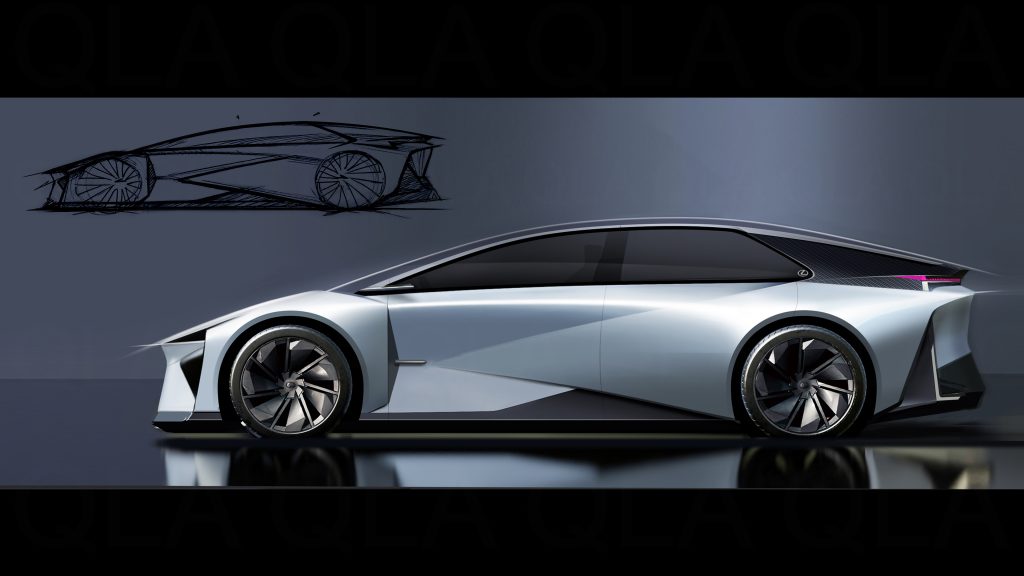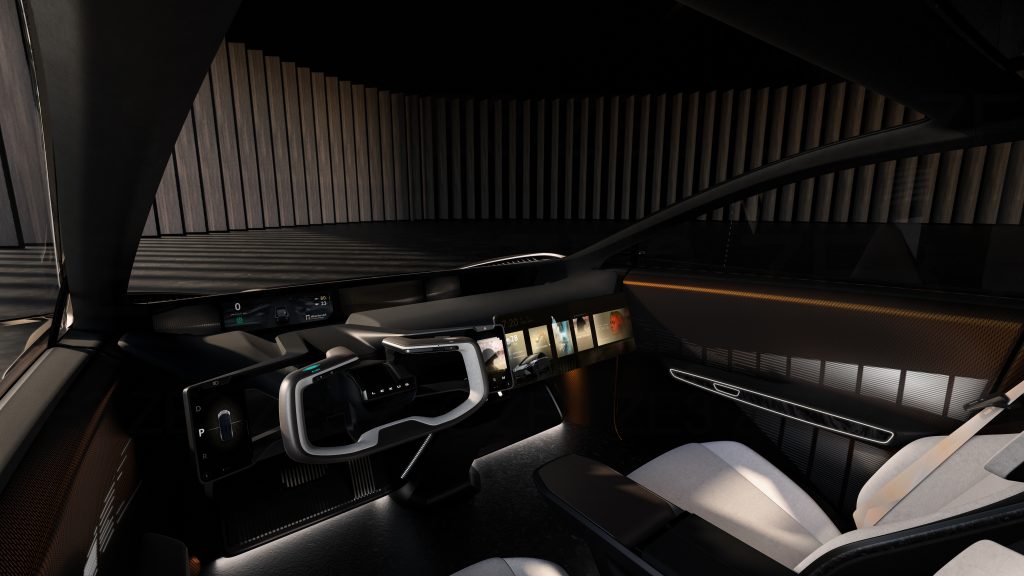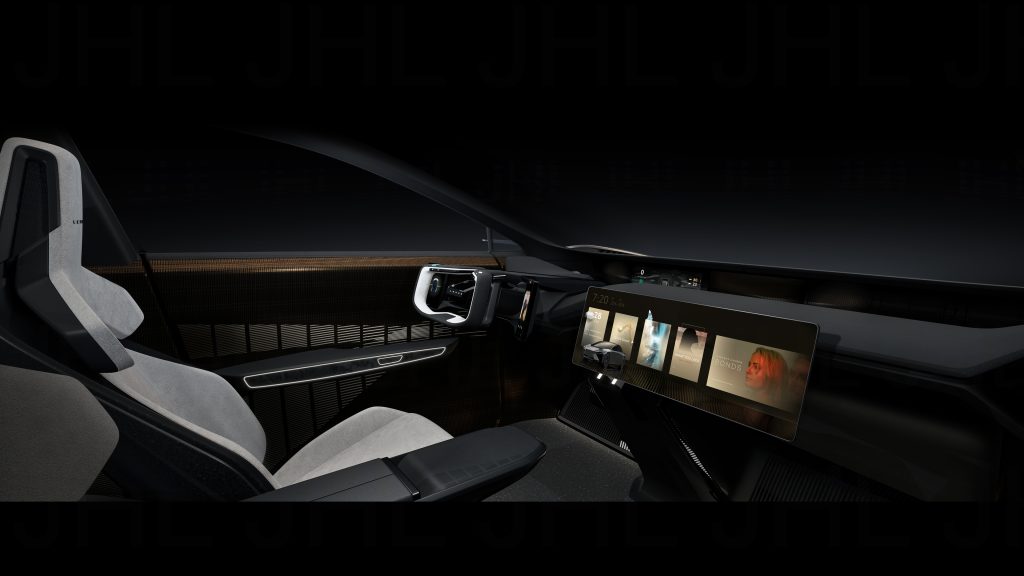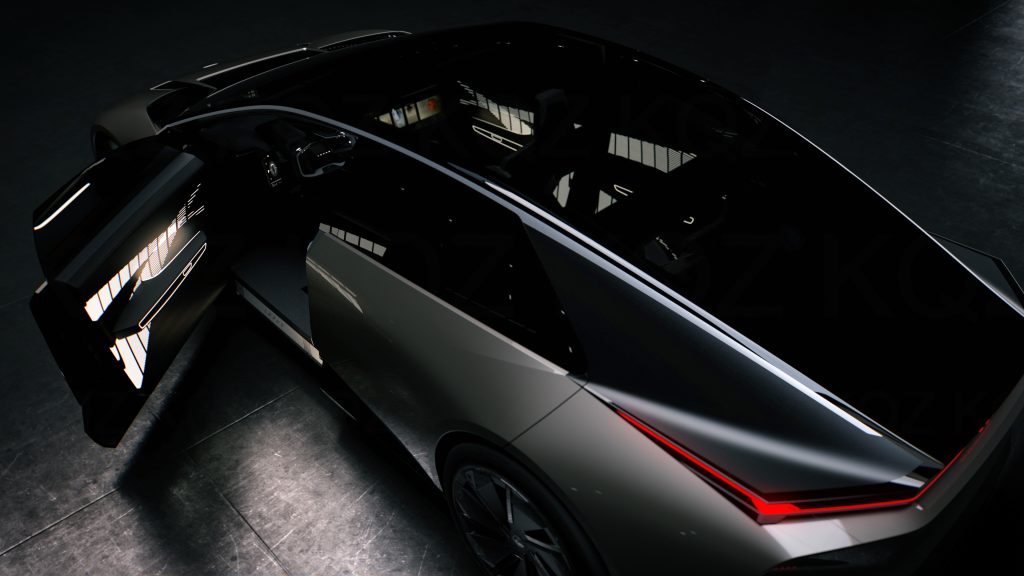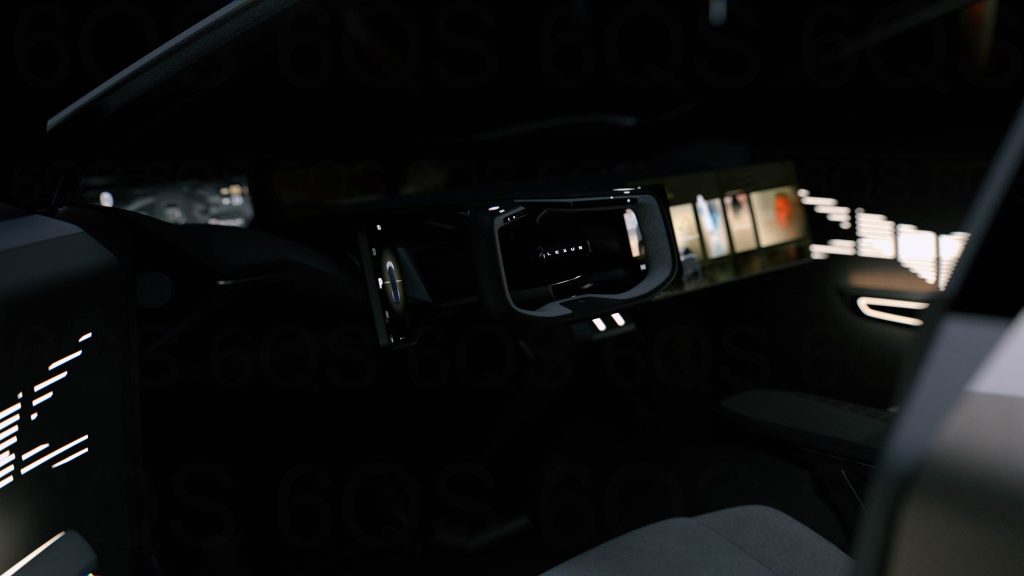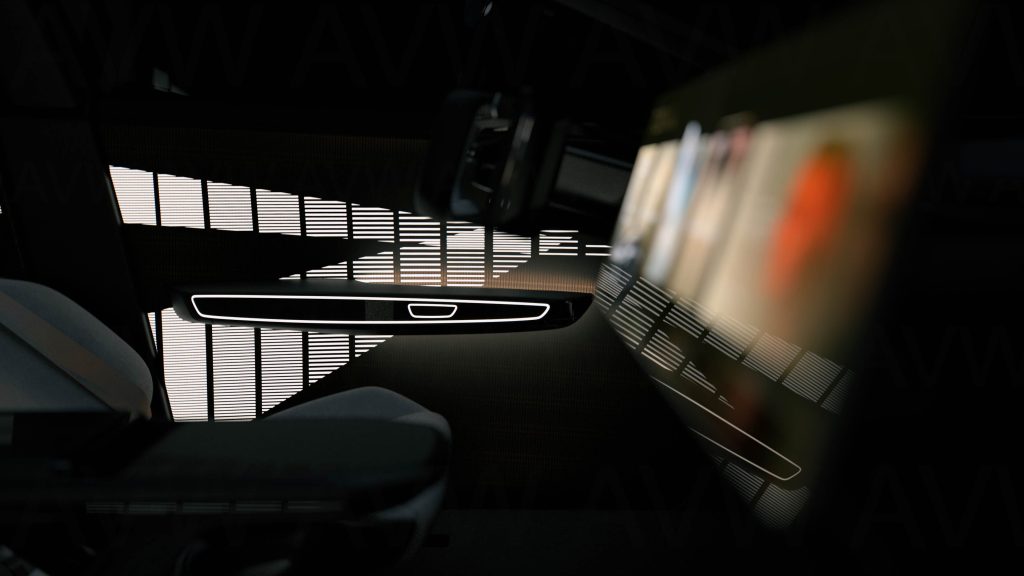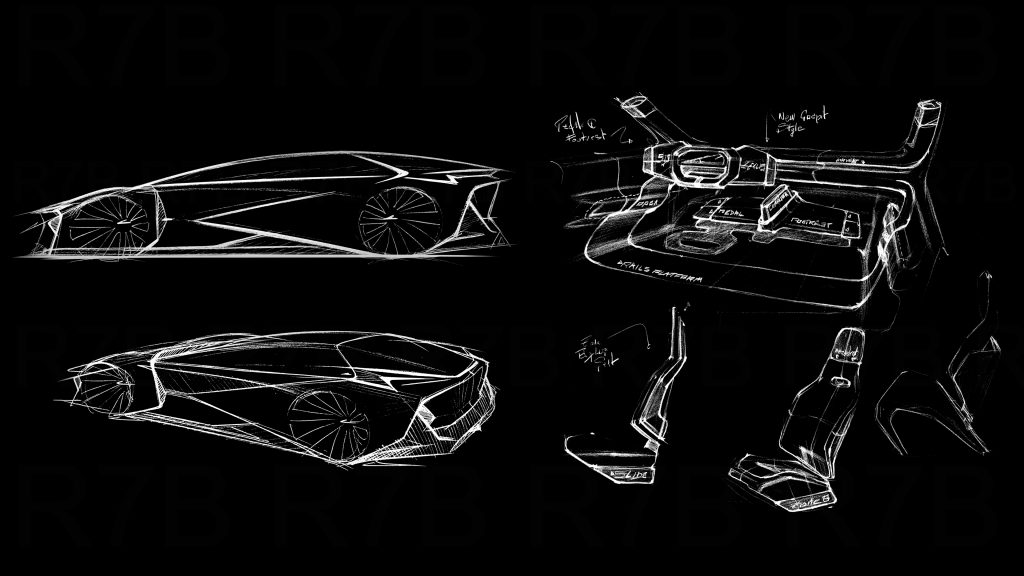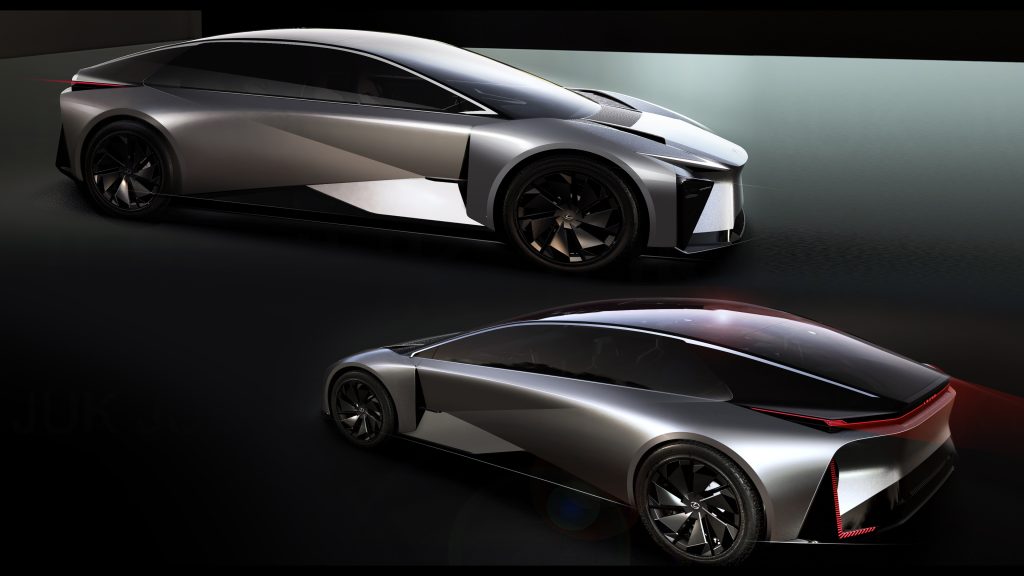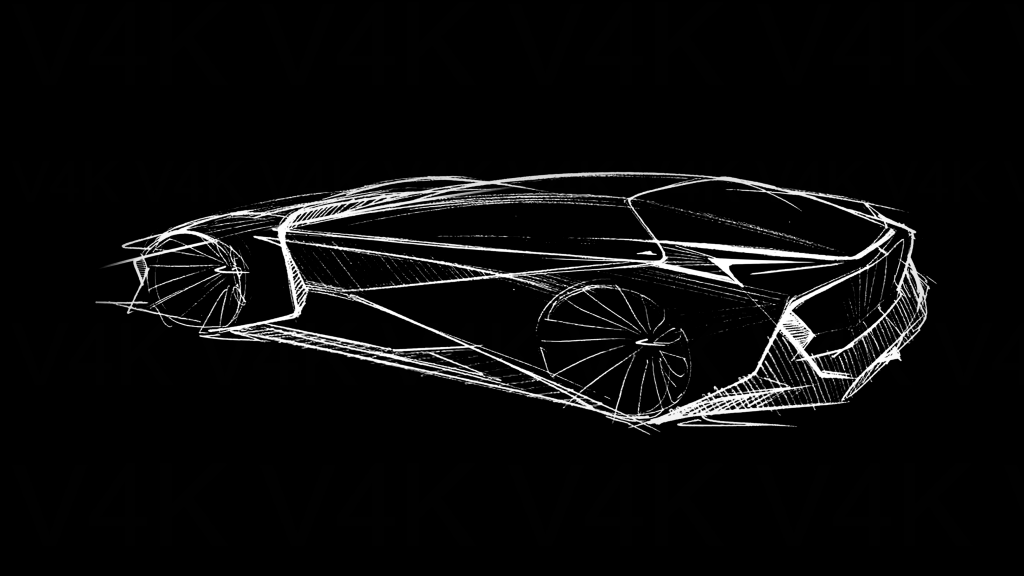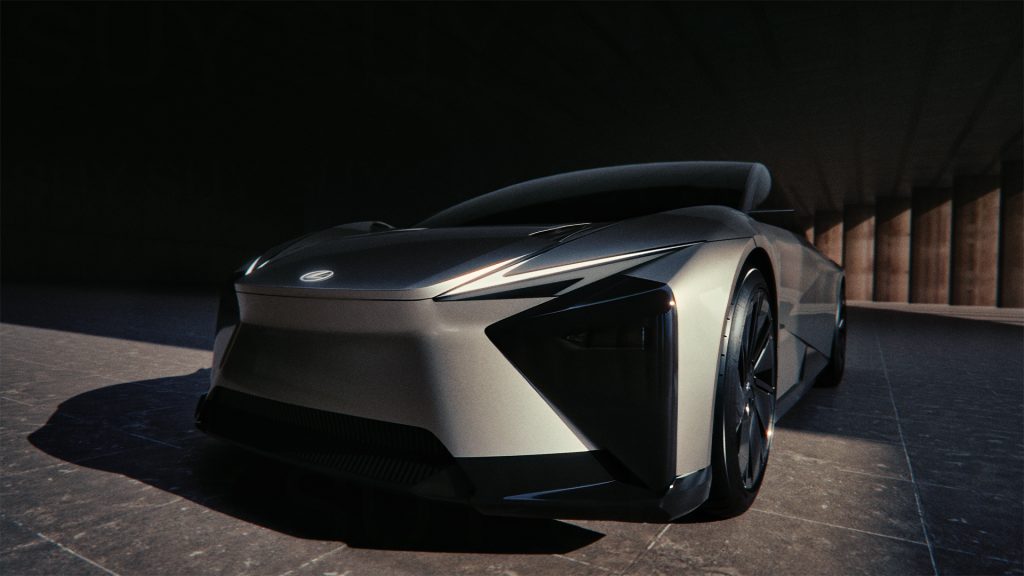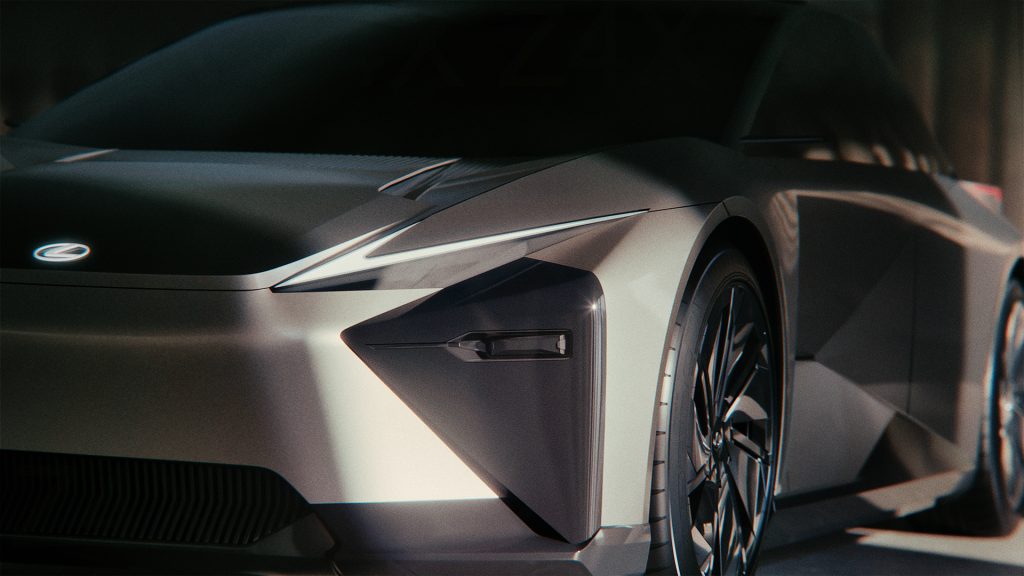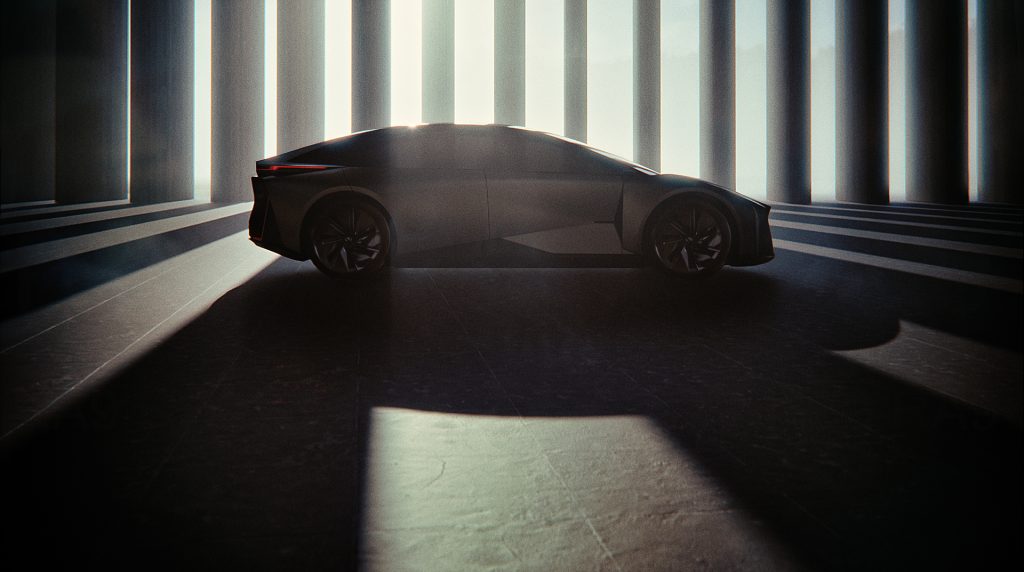Lexus debuts next generation battery electric concepts and technologies at the Japan Mobility Show
Pushing the boundaries of the electrified experience
- Japan Mobility Show hosts world premiere of two next-generation Lexus battery electric vehicle (BEV) concepts
- LF-ZC battery electric saloon concept, previewing a new production model scheduled for launch in 2026
- LF-ZL, a flagship battery electric SUV concept presenting a future vision for the Lexus brand
- Driving pleasure delivered through integration of state-of-the-art electrification technology and software in a next generation BEV platform
- New Arene operating system enables personalised driving experiences and extended entertainment and connectivity opportunities
- Technology developed for using bamboo as a signature material, promoting recycling of natural resources and a sustainable society
The Lexus press conference at the 2023 Japan Mobility Show
can be viewed at the following address: https://youtu.be/vSR0umnsCeE
Lexus is presenting the world premiere of a series of new battery electric concept models at the first Japan Mobility Show this week (Tokyo, 26 October to 5 November). Taking the theme “Pushing the Boundaries of the Electrified Experience,” the company is giving a rich insight into how it will maximise the opportunities offered by electrification and new technologies to deliver fresh mobility experiences.
The Lexus booth is hosting the public debut of the LF-ZC, a battery electric saloon concept which points towards a new production model scheduled for release in 2026, and the LF-ZL, its vision for a flagship battery electric SUV.
Lexus has been a technology pioneer ever since the brand was founded in 1989 and it has a proud heritage of challenging the conventions of the luxury car market and consistently delivering new value to customers. Now established as a global luxury lifestyle brand, it continues to take up the challenge of creating cars and experiences that exceed customer expectations.
Lexus’s aim is to be a battery electric vehicle brand in Europe by 2030 and globally by 2035. To achieve this goal, it will introduce a completely new modular vehicle structure, adopt cutting-edge new production technologies and totally revise its vehicle software platform.
Functionality and beauty, without compromise
The next generation of Lexus BEVs will have more versatile packaging thanks to the downsizing and weight reduction of all their structural components. They will also benefit from the constant honing of the Lexus Driving Signature that has gone hand-in-hand with the evolution of new electrification technologies. The new concepts embody Lexus’s vision to deliver BEVs that present both functionality and beauty, without compromise.
The LF-ZC symbolises Lexus’s electrification journey, with its sleek proportions, low centre of gravity, spacious cabin and an emotionally charged design that blends functionality and aesthetics while promising an exhilarating driving experience.
The LF-ZL concept offers a glimpse into a future where mobility, people and society can be seamlessly integrated. The driving experience will be tailored to each individual, the vehicle taking hints from the driver’s habits and making personalised suggestions to foster unparalleled interaction. This flagship model aims to help empower people to live the life they want while contributing positively to their personal surroundings, the wider environment and society as a whole.
Both concept vehicles feature a next-generation fully digital intelligent cockpit that provides intuitive, quick access to essential controls in an immersive driving environment. The new Arene OS interface software will enable progressive feature updates to keep pace with the evolution of safety systems and multimedia functions.
Driving performance
In its development of next-generation BEVs, Lexus seeks to enhance the pleasure of the driving experience, making the driver feel at one with the vehicle. This includes leveraging the inherent inertia characteristics of BEVs and adding the smooth drive force control of the DIRECT4 all-wheel drive system (as featured on the current RZ 450e) and the intuitive, linear feel of a steer-by-wire system.
As the Arene OS evolves, Lexus is also committed to providing a driving experience personalised to each individual with a focus on delivering an ideal balance of acceleration, cornering and braking. The goal is to create the ultimate vehicle for each customer through a synergy of hardware and software.
Exterior design: “Provocative Simplicity”
The design theme, known as “Provocative Simplicity,” represents an evolution of Lexus’s unique identity, focusing on a provocative presence and refined, simple design. By prioritising aerodynamic performance and incorporating distinctive features and structures specific to BEVs, the design team strived to achieve a captivating, condensed, and low-slung form that instantly creates a sense of emotional impact.
The concept displays a sleek silhouette which extends from the low-slung bonnet, through the tapered cabin towards the rear. The flared rear wheel arches are accentuated, giving a balance between aerodynamic performance and wide stance.
The spindle body design flows from the car’s front face, continuing seamlessly along the sides of the vehicle to the rear bumper, symbolising an all-encompassing evolution of function and design through electrification.
Functional elements have been transformed into distinctive features, with integration of aerodynamic components such as air intakes and outlets. The result is an emotionally engaging exterior that delivers aerodynamic performance with no sense of the design being commoditised.
Fully digitised intelligent cockpit
Positioning the front occupants in a low, forward position creates a sense of spaciousness in the interior. The fully flat floor and panoramic roof add overhead expansiveness, resulting in an unexpectedly open interior design not evident from the exterior.
Functions that have previously been spread across a wide area of the cockpit have been consolidated on digital pads within the driver’s arm reach. Operational functions such a shifts, safety and driver assistance (ADAS) systems and drive mode selection are located on the left-hand pad while convenience features such as audio, climate control phone and AI functions are grouped on the right.
The “eyes on the road” principle is supported by a distant view meter, which projects information onto the windscreen like a head-up display. Digital side mirrors are also fitted, minimising shifts in the driver’s focus, gaze and head movement to monitor the vehicle’s surroundings, promoting concentration on the task of driving.
An ultra-wide monitor on the front passenger side can be used as an open platform for entertainment and diverse mobility applications.
Bamboo CMF Concept
The Bamboo CMF Concept1 is being presented at the Japan Mobility Show to illustrate Lexus’s SDG (sustainable development goals) efforts, focusing on circular use of resources while at the same time giving customers a new experience in sophisticated, luxurious design.
In line with Lexus’s SDG philosophy, bamboo is the signature material in the concept vehicle exemplifying the commitment to efficient recycling of valuable natural resources. Bamboo strikes a balance between fast growth, significant CO2 absorption capacity and an enduring beauty that has seen it used as a material for Japanese construction and crafts for centuries.
Different techniques have been used to incorporate bamboo in the CMF Concept’s design to achieve a new level of luxury and beauty. For example, bamboo fibres and woven fabrics are used for decorative elements that interact with the ambient light.
Next-generation BEV characteristics deliver superior performance
With no need for an engine compartment, aerodynamic performance and design aesthetics have been balanced with a target drag coefficient (Cd) of less than 0.2. A low bonnet and cowl allow for an unprecedented, expansive field of vision from inside the car.
Lexus aims to achieve approximately twice the range of conventional BEVs with a next generation performance (prismatic) battery and improved energy efficiency. The aim is to allay drivers’ concerns about the distance their car will take them and help them enjoy the drive, whether a city commute or long-distance trip.
Improved aerodynamics and weight reduction enhance vehicle efficiency and battery performance. The battery’s low profile contributes to increased vehicle design flexibility, resulting in a more attractive silhouette. It also helps secure a low centre of gravity for improved driving dynamics. High energy density is achieved by simplifying and compacting the battery structure.
Advanced customisation to create a truly personalised vehicle
The next-generation voice recognition system will use artificial intelligence (AI) technology to provide a service that’s like talking to an attentive and accommodating personal servant, with swift response to commands and helpful, flexible suggestions. Using self-learning functions for software customisation, the vehicle will automatically apply optimal personalised settings for each customer, each time the car is driven.
Going beyond the performance of conventional navigation tools, the system makes route and driving mode recommendations that are aligned with the driver’s preferences, based on their daily activity patterns and current mood.
Through the accumulation of driving data, it also aims to deliver a more personalised driving experience. The system goes further than simply understanding people’s personal characteristics, it also has the potential to identify subliminal preferences that they might not be aware of.
Adoption of the new Arene OS will have an unprecedented impact on vehicle driving dynamics. In a single vehicle it will be able to replicate the driving characteristics, sounds and vibrations associated with different types of car, so the driver can tailor the experience to suit their personal preference.
The combination of steer-by-wire and over-the-air (OTA) software updates will allow vehicle settings from the virtual space to be brought into the real world. Customers can take part in e-sports using the steer-by-wire technology in their vehicle and then implement their preferred settings via OTA to experience them in real world driving.
New modular structure
Lexus’s next generation BEVs will feature a new modular structure which divides the vehicle body into three parts: front, centre and rear. This will be made possible through gigacasting, a process which will provide greater freedom of form. Meanwhile the integration of parts will increase rigidity, contributing to linear, natural vehicle dynamics.
Locating the battery in the centre section ensures there is no structural effect on the front and rear. It also allows for simple integration of advances in battery technology, making future development more agile.
The production process will use a self-driving assembly line, where cars will move autonomously through each stage of the manufacturing process. The vehicle can drive itself, using just its battery, motor, wheels and wireless terminal components. Eliminating conveyor belts from the production line will allow for more flexible factory layouts, reduce the lead-time for mass-production and save on investment costs.
LF-ZL concept hints at the potential for a future flagship BEVs
The LF-ZL points to a future Lexus’s flagship model, offering a prestigious ownership experience beyond the car, driven by innovation in next-generation BEV architecture and software advancements from the new Arene OS. Its cabin is spacious and relaxing, taking advantage of the freedom in BEV-specific packaging and optimising interior space. Technology is applied to make traditional Omotenashi features are even more advanced, ensuring an even more pleasurable on-board experience.
By harnessing the full capabilities of Arene OS, Lexus will establish advanced information integration that learns and anticipates the driver’s needs, resulting in a personalised mobility experience. It also generates fresh experiential value by enabling interaction with a range of societal infrastructure and services. Through Interactive Reality in Motion2, onboard sensors work in conjunction with digital data from the car’s surroundings. For example, when drivers point to objects or places of interest during their journey, the car’s display promptly delivers information along with voice guidance, enhancing the interactive connection between people and their cars.
Big Data is used to manage the charging process and power supply, so the vehicle can be connected to a network and become an integral part of the local infrastructure when parked. This allows seamless integration of the vehicle with the customers lifestyle
LF-ZC outline specifications3
| Overall length | 4,750 mm |
| Overall width | 1,880 mm |
| Overall height | 1,390 mm |
| Wheelbase | 2,890 mm |
| Cd value | Less than 0.2 (target) |
LF-ZL outline specifications
| Overall length | 5,300 mm |
| Overall width | 2,200 mm |
| Overall height | 1,700 mm |
| Wheelbase | 3,350 |
1 CMF – Colour, Material and Finish, representing design elements in car manufacturing.
2 Concept for an interactive reality experience platform. By combining data from maps and vehicle cameras with AI chat functionality and in-car voice recognition, the goal is to link information held by the car with digital information from its surroundings.
3Display vehicle.
ENDS

